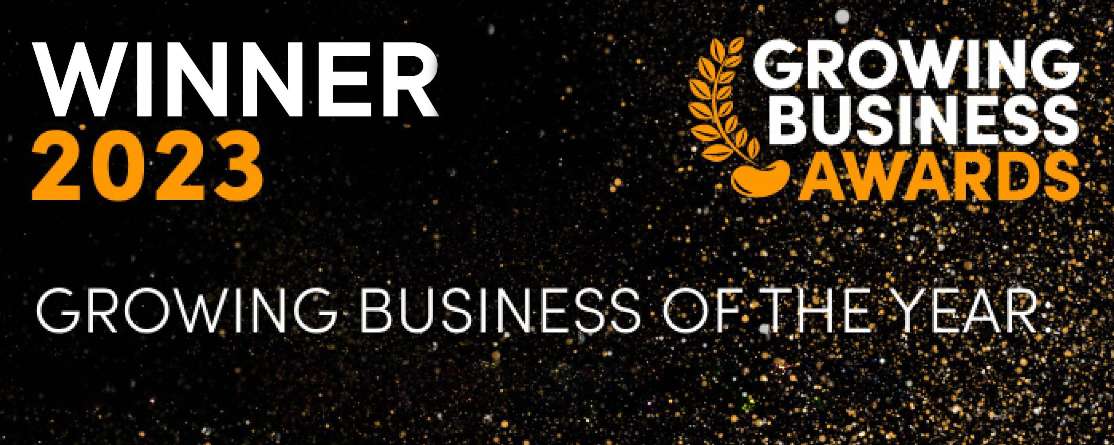Dragonfly AI is a predictive analytics platform designed to help you improve the quality and effectiveness of your creative across any format, channel and market.
Navigating fragmentation in retail media
Expert-led podcast discussing trending articles, and news in the AI and attention spaces.
.png?width=1920&height=1920&name=Intro_square%20(2).png)
Webcasts led by experts
Navigating fragmentation in retail media
.png?width=831&height=600&name=Mask%20group%20(1).png)
Everywhere you look you will see news about retail media booming. It is becoming such a massive business that by 2025 it is set to become a $100 billion market.
The growth of this explosive advertising channel has brought with it fragmentation and it is calling out for standardization, clarity, and collaboration.
Retail and insights legend, Miya Knights, and Enterprise Customer Success Expert, Kate Nunan, discuss the influence, challenges, methodologies, and predictions for the fragmentation being left in retail media’s wake.
Q: How do you perceive the impact of fragmentation in the retail media landscape? From a retail perspective, how does it influence business strategies, and from a market research standpoint, what challenges does fragmentation pose in gathering accurate and meaningful data?
Miya: Let's take a step back for the audience's sake and give some context to this. Retail media networks are now the third biggest advertising revenue source, third biggest in terms of digital advertising revenue globally behind social and paid. Retailers have realized that the eyeballs that they can attract online to their ecomm presences, whether it's their own or a marketplace that they're launching to expand that reach, can be monetized, right? Those eyeballs are of interest to other advertisers than themselves.
I would say the apex predator in the room is Amazon in regards to this. They are growing exponentially with, very, very large margins. They're making a huge amount of money. I think Q3 results showed that the Amazon ad business had grown to 27%, quarter on quarter, and 47% year on year.
Their margins are something like 89%. They barely have to spend anything. You can see why retailers are getting into it. There are nearly 600 retail media networks today and growing every single day. Each retailer is launching their own retail media network. The big-tier ones are leading the way, but that brings us to answer your question about fragmentation.
With so many different retail media networks run in different ways, with different ways of measuring, and different ways of programming. That's what you're referring to as fragmentation. It means that any advertiser that wants to use these media networks is kind of having to compare apples with oranges. There is no like-for-like in that respect.
From a retail perspective in terms of influencing business strategies, I think most retailers as advertisers are thinking I need to get into this space. I need to start making money out of this, but I also need to have a presence on other retail media networks. That's how it's influencing business strategies in terms of what is the best way for me to do that effectively and in a consistent way that allows me to measure its impact and track its performance and therefore maximize return on investment.
From a market research standpoint, it just makes our jobs really, really difficult in terms of consulting with retailers who want to know who has the most valuable retail media network, and who's going to deliver the best return on their investment.
Kate: I think a lot of the feedback that I get from my clients is not knowing what good looks like. I think that feeds into that fragmentation piece of one retailer might have certain rules around what can be displayed or not displayed versus another retailer. Everyone's trying to do the best job they can. But as Miya said, it's not apples to apples or apples to oranges.
You're stuck in this, I can do this over here, but not over here. So, from a business strategy perspective, it's how do I work quickly? How do I work properly? How do I still get that personalization to my customer? It is a lot of struggling trying to get that or why, but doing the best job possible.
Trying to do the best with limited time resources, opportunity sometimes as well with personalization or changing for a retailer. It's really difficult. I think that fragmentation piece is huge right now.
Now more than ever with that growth in digital or growth on the spread of e-retailers across the globe, it is really struggling and difficult for people.
Q: Leading on from that, considering the call for unification in this industry, what strategies do you think would be effective in achieving a more cohesive and standardized approach?
Kate: I've seen a lot of CPGs over the last maybe 10 years move to this kind of global approach. I think it is probably a very good thing to do to have this overarching view.
Again, we have that merging of shopper insights and consumer insights. I think that line is blurring. That comes back to how quickly consumer habits are changing and how people want to shop or change their habits to shop, particularly in a more digital way. Some things that some brands are starting to do is probably looking at the data sources that they have and probably moving away a lot from that traditional research.
That's going to go hand in hand with consumer habits changing. A lot of people are now looking at what they have available to them and then the different data streams. That's where AI plays and technology plays into being able to kind of get to that kind of real.
This is what people want. This is what they're saying. This is how they're shopping. And then as I said, taking a step back within brands to say, okay, globally, how do we communicate this to our teams while not stifling them either, because you don't want one global strategy because not every market's going to behave the same. Not every customer is going to behave the same.
It’s a combination of taking a step back, looking at what you have, really making sure what you have is a good data source and source of truth, but also being able to look at it in an adaptable way.
Miya: As a researcher, you learn to look at what's gone before to try and help predict the future. We've got paid, we've got social, and we have got more standardized data collection methodologies from there, that we can potentially use and look to augment when we're applying the same data collection effort to retail media networks.
Brands need to look at the standard measures that they already have and then go from there in terms of how they need to be modified, and how they need to be updated. A key one would be ROAS, return on ad spend.
There are some companies out there that are very, very good at giving you insight into your Amazon ad, return on ad spend, and your Amazon ROAS. And looking at how those kinds of companies, those kinds of data intelligence service providers, build up their data standards.
Think back to the introduction of programmatic advertising with the advent of the internet, things like click-through rates. We didn't have that. We had to kind of coalesce around these standardized performance metrics. That's what I'm seeing now, but going, drawing back to the question originally about fragmentation, it is difficult right now, but as we've seen with paid, as we've seen with social, there will be a convergence. And I think it will be around ROAS.
Kate: I hear a lot from my clients when trying to get that particular performance data for retailers, it's not necessarily shared back to the brands. That's something that is maybe a barrier as well to this kind of unification that there isn't that sharing of data.
There's probably a lot of data that brands don't have access to but sit on retailers. That might be something that will have to change in the future. I know when I speak to my clients about different projects, it's always a key issue of, oh, I'd love to give you that data, but I don't own it even as a brand manager or like someone in the Insights team. That might be a groundbreaking thing that should happen soon for all of the brands out there.
Q: What role do you think market research will play in understanding and responding to these shifts? And how can retailers use this to tailor their media strategies going forward?
Miya: Using the market intelligence platforms to not only understand their return on ad spend and return on investment but then look to these market research platforms to benchmark themselves and benchmark their performance against an industry standard is going to be key.
One of the things that I found particularly interesting was hearing the UK online grocer, Ocado Retail Ltd, talk about launching its retail media network. It's been quite vocal about the fact that it's now exposing anonymized customer data to brands, which I think also builds on the conversation we were having about the bifurcation between brands and retailers and what data retailers like to hold on to and ring-fence. But they're being very proactive positioning themselves as a retail media network of choice. And as a result, they've had diverse advertisers, brands, and retailers come to them wanting to advertise.
The great example their head of media partnerships gave was Halfords. They're a motoring retailer. You go and you buy your motoring accessories. You wouldn't be able to buy anything from Halfords in an online grocery store. But Halfords has worked out that the kind of audience that Ocado attracts. They have been using the Ocado retail media network to target Ocado customers around bank holidays, for example. You're planning that big road trip. Top of mind, you've got that big Halfords banner across the top of the site, for example. And it's hopefully drawing attention to examples like that.
Kate: It's kind of coming into the space that people or customers aren't just one type of consumer that there is this kind of ecosystem. It's funny because I think market research is moving into this shift of this ecosystem of what people live in and that's kind of being mirrored or mapped by these technology solutions as well, that it's not just one source of data or one place where people shop, it's like, okay, we're marketing to, we're selling to whole people who have different interests.
How do we capture that and how do we make sure that we're communicating in the right way?
Bringing the expertise from both Miya and Kate in on this ever-growing channel was fascinating. Combining the retail insights knowledge with market research and client-driven experience told us what retail media means now and how it will continue to grow in the coming years.
The original article that started the discussion is here.
Listen to it on Spotify here.
Our next episode will be live in the first week of January – subscribe so you don’t miss a single installment in 2024.
We have some more incredible guests and some surprises up our sleeves!


